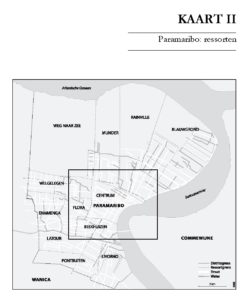Where Global Contradictions Are Sharpest ~ Research Stories From The Kalahari ~ Contents
 The ‘Bushmen’ or ‘San’ of the Kalahari could well be called an iconographic people. Partly as a result of this, over the years abundant social research has been carried out among the San. Keyan Tomaselli and his research team from the University of KwaZulu-Natal in South Africa form part of that tradition; however, in this book Tomaselli is also able to reflect critically, and not without a touch of irony, on the way the San have been represented over the years. Hardly ever has there been a researcher who so uncompromisingly and aptly illustrates the many ethical contradictions in doing fieldwork among the San, and at the same time manages to reconstruct and represent the actual fieldwork experience and the San people so vividly that you almost taste the dust of the Kalahari and smell the raucous world that is depicted.
The ‘Bushmen’ or ‘San’ of the Kalahari could well be called an iconographic people. Partly as a result of this, over the years abundant social research has been carried out among the San. Keyan Tomaselli and his research team from the University of KwaZulu-Natal in South Africa form part of that tradition; however, in this book Tomaselli is also able to reflect critically, and not without a touch of irony, on the way the San have been represented over the years. Hardly ever has there been a researcher who so uncompromisingly and aptly illustrates the many ethical contradictions in doing fieldwork among the San, and at the same time manages to reconstruct and represent the actual fieldwork experience and the San people so vividly that you almost taste the dust of the Kalahari and smell the raucous world that is depicted.
Note on the Author
Keyan G. Tomaselli is Professor in Culture, Communication and Media Studies, University of KwaZulu-Natal, Durban. He is a Fellow of the University and serves on the advisory board of !Kwa ttu – The San Cultural and Educational Centre. He is Old World book review editor of Visual Anthropology, and has published on visual anthropology in this and other publications such as Appropriating images: The semiotics of visual representation (Intervention Press, 1999). Other journals in which Tomaselli has published include: Visual Studies, Cultural Studies, Journal of Film and Video, Research in African Literatures, etc. He is published in translation in Italian, Spanish, French, Italian, Portuguese and Arabic, amongst others. Tomaselli is editor-in-chief of Critical Arts: A Journal of South-North Cultural and Media Studies.
Contents
Acknowledgements, Acronyms, A Note on Pronunciation
Starting Off – Different people, different communities – Specifically, what are we doing?
Chapter 1. Negotiating Research with First Peoples
Chapter 2. Reverse Cultural Studies: Field Methods, Power Relations and 4X4s …
Chapter 3. ‘Dit is die Here se Asem’: The Wind, its Messages, and Issues of Autoethnographic Methodology in the Kalahari
Chapter 4. ‘Op die Grond’: Writing in the San/d, Surviving Crime
Chapter 5. Psychospiritual Ecoscience: The Ju/’hoansi and Cultural Tourism
Chapter 6. Textualising the San ‘Past’: Dancing With Development
Chapter 7. Stories to Tell, Stories to Sell: Hidden transcripts, negotiating texts
References
© Keyan G. Tomaselli, 2005
Cover photograph: Frederik J Lange (Jnr). Taken between Witdraai and Welkom, Northern Cape, June 2005.
Coverdesign: Ingrid Bouws, Amsterdam
Editing: Saskia Stehouwer
Published by Rozenberg Publishers, Amsterdam, 2005, ISBN 90 5170 481 X







